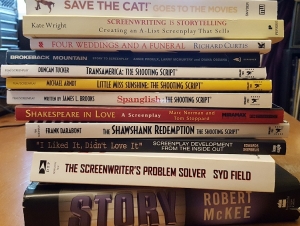by Renée J. Lukas
For me, characters are the most fun part of writing. Well-developed, dynamic characters also happen to be essential to a good story. So here are some tips I’ve learned along the way to help create characters that jump off the page. Maybe some of these will spark your imagination. . .
 Tip #1: Know thy character.
Tip #1: Know thy character.
Commit this to memory. This is the oldest, wisest saying in the writer’s book of sayings. Or I’m just saying it now. Whatever the case, do not underestimate the importance of knowing your characters. Don’t map out a story like a chess board and use the characters as placeholders to get to a certain square on the board. If there’s a “filler” character like this, readers will be able to spot it right away. You must know who the person is. What makes her get out of bed in the morning? What type of person is she drawn to? What are her self-destructive qualities? If she could have anything in the world, what would it be? Is she really a she? Answers to these questions help you flesh out a real character that seems to live and breathe on the page. You can’t have too much backstory. The more you know about the character, even if it doesn’t all go on the page, the more well-rounded the character will be.
Tip #2: Do what J.K. Rowling did.
No, I don’t mean write about a boy wizard and a villain whose name rhymes with. . .Boldenort. I mean, take a look at the complexity of her characters. Ever notice how no one is all good or all bad? Albus Dumbledore, Harry’s mentor and grandfather figure, turned out to be very flawed, his ambition driving him to sacrifice members of his own family. And Severus Snape, with his shifty eyes and cruel teaching style, turns out to be the one who was bullied by Harry’s father and who harbored an unwavering love for Harry’s mother. Not such a bad guy after all, in spite of the weird hair and generally creepy stare. If nothing else, contradictions like these will get people talking about your story. In fact, we have an ongoing debate in our house over whether or not Harry should have named his son Albus. But that’s another blog.
When you have characters that aren’t as they seem, or have flaws in spite of some good qualities, this makes them more real. Think about the people you’ve met. Have you ever known a person who was completely pure and good? Or irredeemably evil? It’s not likely. What people show you is sometimes at odds with what’s going on inside. Even better are the fatal flaws within us. Sometimes the most interesting stories aren’t about a hero fighting against an enemy, but something inside—greed, jealousy, paranoia—that threaten to take him or her down.
Tip #3: Use people you know.
This doesn’t mean write about people in your life as in a diary. One thing I like to do—it’s a lot like making a recipe. Take a strong-willed, Type A quality from a family member, add a little OCD from yourself if you have it, mix in a helping of duplicity from that woman you encountered at a place you used to work. . .and voila! When you envision how these qualities manifest themselves in real people, it gives you a clear picture in your head and makes it easier to keep that character more consistent than if you pulled him or her out of thin air.
Some writers have cut out photos from magazines, imagining what a particular model might act like, and they use the photo as a guide to remind them.
Even a modified version of an existing character can work if you modify enough—the Wicked Witch in The Wizard of Oz with a soft spot for______. The only limits are your own imagination!
Tip #4: Don’t be gendery.
Gendery (adv.) – Writing a character while being preoccupied with its gender and the stereotypes associated with that gender.
For example, not all men are the macho, beer-drinking golfers that Father’s Day cards would have us believe. In fact, I can never find an appropriate Father’s Day card for my dad. They usually show men in boxers, sitting in a lounge chair in front of a TV, drinking beer or joking about playing golf or some sport. My dad is an academic type who could care less about sports, drinks wine instead of beer, and sits at a chair in his study more than in front of a TV. So his card would be a cartoon guy in a suit and tie with bookshelves behind him and a glass of wine. (I tend to make his cards myself.)
This just illustrates how not all men are the same. What a surprise! And guess what? The same is true for women!
Even though Hollywood hasn’t figured that out yet, I’ll repeat, the same is true for women. Some male screenwriters have trouble getting beyond the “female as love interest” trope. To them I say, think of all the women you’ve met in your life—the goofy, crazy, obsessive, neurotic, funny women. I can’t believe I have to write this. Anyone who has been living in the world would already know this. I know many women who hate the color pink (myself included), who don’t wear dresses and who have other things on their mind besides men. Take note, Hollywood! Imagine how much more interesting stories you could be telling!
I hope some of these tips help to take you in new directions with your characters. Imagine your next group of major characters are all in a waiting room, waiting impatiently for you to call them into action. They want an exciting experience. So give them one. Ready, set, go!
Happy writing!




